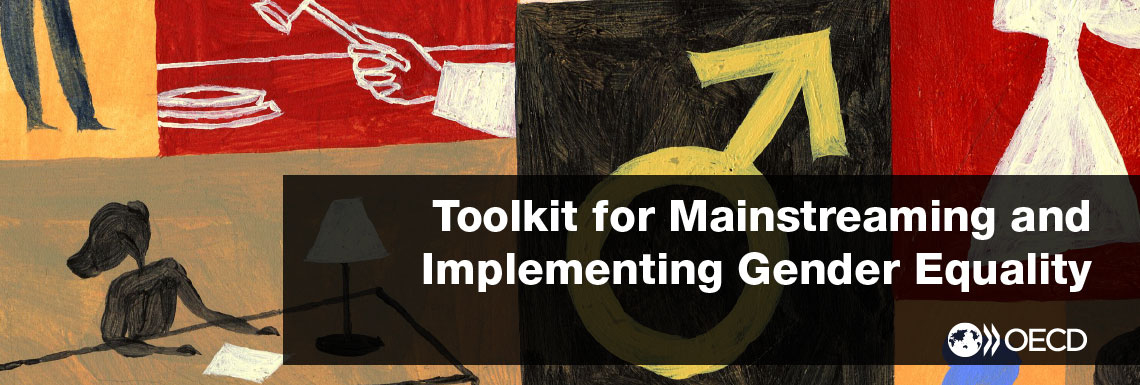Justice sector has developed a strategic course of action for gender equality
SELF-ASSESSMENT QUESTION
- Have you identified gender equality and mainstreaming objectives across the justice sector in view of addressing identified gender gaps?
- Have you defined and communicated roles and responsibilities across the justice sector for implementing, monitoring and overseeing gender equality and mainstreaming objectives in the justice sector?
- Have you involved a broad range of stakeholders within the justice and legal sector and at the community level in the elaboration of a strategic plan for gender equality?
WHY IS IT IMPORTANT?
The success of gender equality and mainstreaming initiatives across the justice sector will depend on whether they are supported by clear objectives, targets, timelines, capacities and resources. Court management can play an important role by providing leadership and accountability for the implementation of this strategic course of action. Top management within the judicial organization (e.g. court presidents, court managers) can be powerful actors of change by stressing the importance of gender equality and voicing their support for gender mainstreaming to the rest of the organization. In order to raise awareness and involve the rest of the organization, the strategic action plan should be supplemented with a clear, concise and inspiring communication plan.
ACTIONS TO CONSIDER
- Ensure that gender equality objectives are supported by actionable guidance and reflected in relevant bylaws.
- Ensure that gender equality priorities and plan encompass all phases of judicial career (from application to promotion at the most senior level), and not only judicial appointments;
- Make sure that the people involved in setting the objectives for gender mainstreaming have enough expertise on gender issues and provide them with (extra) training if necessary;
- Identify leaders across the judiciary to guide, steer and widely disseminate gender equality objectives;
- Build incentives to increase staff and managers' compliance with gender equality objectives ;
- Ensure that resources (financial and working time of staff) are made available to address gender gaps and promote gender equality;
- Ensure that gender expertise made available to the judiciary to support the implementation of gender equality objectives;
- Foresee mechanisms to hold court management accountable for achieving gender equality goals;
- Set up a platform for gender innovation where court staff can present ideas aimed at promoting gender equality.
PITFALLS TO AVOID
- Limited involvement of the judicial organization as a whole in the development of gender equality objectives;
- Ignoring potential institutional resistance within courts to implementing gender equality objectives. Resistance should be seen as a starting point for discussion and awareness raising
- Present gender-mainstreaming as a separate policy and as something ‘additional’; gender should be an integral aspect of all activities and initiatives at all levels of the judicial organization.
- Define objectives that are unrealistic which means setting the judicial organization up for failure. Objectives should be ambitious but attainable.
COUNTRY EXAMPLES
France
Each ministry in France adopts their own implementation roadmap to make a clear assessment of where ministries stand vis-à-vis their goals for gender equality and which interventions are necessary to achieve their visions. Accordingly, the Ministry of Justice develops its own Gender Equality Roadmap every year. The roadmap lays out actions to foster gender-sensitive internal practices within the justice sector, and measures to foster gender equality within judicial workforce and wages. The different departments of the Ministry of Justice are involved in the elaboration of the strategic plan for gender equality and the Secretariat-General have the transversal mandate.
Chile
Chile adopted an action plan on gender mainstreaming in the judiciary in 2015. The action plan created a Working Group on Gender Issues as a body of knowledge and observation regarding the incorporation of the gender perspective into the judicial branch. The Working Group is composed of members of the judiciary as well as ministers, judges and trade union representatives. The action plan sets a guiding framework and lays out actions to be taken by the Working Group as follows: analyzing and evaluating gender inequalities and gender-based discrimination in the exercise of jurisdictional activity as well as identifying gender equality and mainstreaming objectives in the judiciary. In light of these objectives set by the action plan, the Working Group participated actively in the analysis of the gender-diagnostic studies and in the elaboration of proposals to develop a gender policy for the judiciary. The adoption of the action plan and the creation of the Working Group indicate a strategic promotion of gender equality and mainstreaming within the judiciary in Chile.

